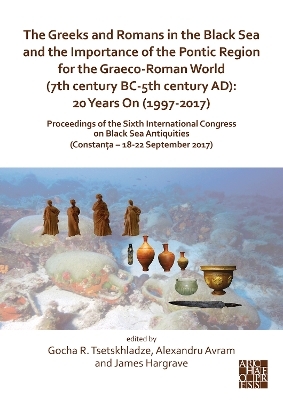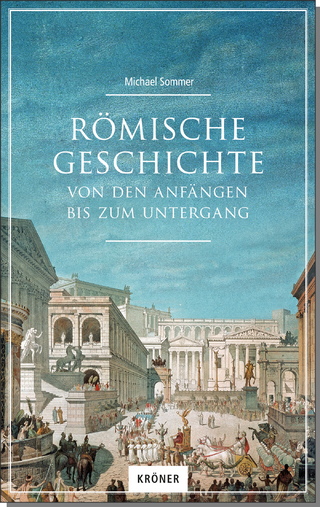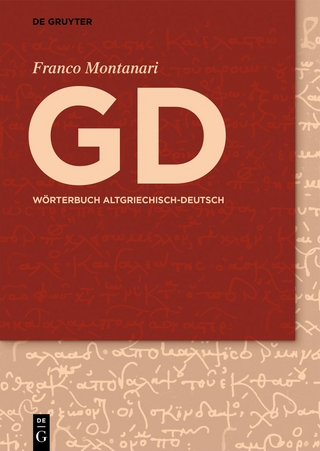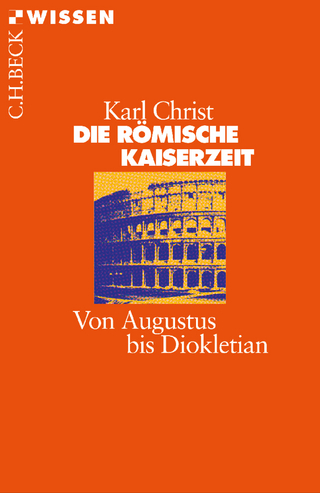
The Greeks and Romans in the Black Sea and the Importance of the Pontic Region for the Graeco-Roman World (7th century BC-5th century AD): 20 Years On (1997-2017)
Archaeopress (Verlag)
978-1-78969-758-2 (ISBN)
The Greeks and Romans in the Black Sea presents the Proceedings of the Sixth International Congress on Black Sea Antiquities, dedicated to the 90th birthday of Prof. Sir John Boardman, President of the Congress since its inception. It was held in Constanţa in September 2017 with the same theme as the first of these congresses, which took place just down the coast in Varna 20 years earlier (‘the Greeks and Romans in the Black Sea and the importance of the Pontic region for the Graeco-Roman world between the 7th century BC and 5th century AD’), celebrating the work of successive congresses in bringing together scholars and scholarship from Eastern and Western Europe and the extensive progress of ‘Black Sea Studies’ in the intervening years. Overall, 85 papers were received for publication from authors in Western and Eastern Europe—there is also a full set of the abstracts submitted to the Congress in Appendix 2. As with previous congresses, the work is divided into sections, the largest of which, the fourth, is, following a pattern established with the first congress, devoted to New Excavations and Projects. The opening lectures and various papers in the first sections reflect (on) the ‘20 years on’ in the title. The vast majority of contributions are in English, a handful each in French and German.
Gocha Tsetskhladze (PhD Moscow, DPhil Oxford) is a classical archaeologist who specialises in ancient Greek colonisation and the archaeology of the Mediterranean, the Black Sea, Caucasia, Anatolia, and Central and Eastern Europe in the 1st millennium BC. ; Alexandru Avram has been a professor of ancient Greek history at the University of Le Mans since 2002 after having taught at the University of Bucharest. His academic interests include Greek archaeology and amphorology and Greek and Latin epigraphy, in particular from the region of the Black Sea and Asia Minor. ; James Hargrave has a PhD in Economic History from the University of Durham and a Diploma in Archive Administration from the University of Wales (Aberystwyth).
Principal Editor’s Preface and Acknowledgments – Gocha R. Tsetskhladze ;
Message from the President of the International Organising Committee – John Boardman ;
Welcome by the Secretary-General – Gocha R. Tsetskhladze ;
Opening Lectures ;
Pontic studies twenty years on: terra incognita – Gocha R. Tsetskhladze ;
Studies in Pontic epigraphy 1997-2017. Reviews and prospects – Alexandru Avram ;
Section 1: Foundation of Greek Colonies and the Character of Greek Colonisation; their Relationship with Pontic and Near Eastern Local Populations ;
The ‘Western Cimmerians’ and the first Greek settlers in the Troad – Jan G. de Boer ;
Colonisation and foundation myth in the Pontic regions – Ivy Faulkner-Gentry ;
Founding the Black Sea settlements. Between literary and archaeological narrative – John Brendan Knight ;
Colonisation of Miletus in the Propontis and Pontus – the view from Sardis – Alexandar Portalsky ;
L’onomastique des magistrats monétaires d’Apollonia du Pont – Dan Dana, Madalina Dana ;
Understanding Greek-native interaction in early Greek Black Sea colonisation. An example from Istros/Histria – Lieve Donnellan ;
Orgame necropolis: a contextual study of the earliest pottery imports – Pierre Dupont and Vasilica Lungu ;
Myrmekion during and after Greek colonisation – Alexander Butyagin ;
Comparative research between the Macedonian tombs and the Scythian kurgans – Peli Plika ;
Giresun and its vicinity in the Greek colonisation period – Salih Kaymakçi ;
Between crisis and conflicts: the territory of Apollonia Pontica in the Late Classical and Early Hellenistic periods – Alexandre Baralis, Martin Gyuzelev and Krastina Panayotova ;
The farming of the Azov coast of East Crimea: a unique type of ‘agricultural fortress’ – Aleksei Kasparov ;
Women warriors(?) and the Amazon myth: the evidence of female burials with weapons in the Black Sea area – Despoina Vovoura ;
Section 2: Pontus and Athens; Pontic Art; Religion; Navigation and Trade; Pontic Kingdoms ;
Thasos et la mer Noire aux époques classique et hellénistique: ‘grandeur et décadence’ d’un circuit économique – Thibaut Castelli ;
From the tower of Kronos to the island of Achilles: placing Leuce in the Greek conception of heroic apotheosis – Marios Kamenou ;
Cultes marins, cultes ioniens en mer Noire – Alexandra Lițu, Valentin Bottez and Alexandra Țârlea ;
Imports and imitations? Some observations on Archaic kouroi discovered in the Black Sea region – Veronika Sossau ;
Zur Frühgeschichte der Tempelzone von Histria: Vorläufiger Bericht über zwei ältere Fundkomplexe – Konrad Zimmermann ;
The Paphlagonians and the Greeks’ perception of them – Manolis Manoledakis ;
Aspects of the economy of the Greek colonies on the west coast of the Black Sea: end of the Archaic-Hellenistic period – Nicolaie Alexandru ;
Trade routes and the historical geography of the south-western coast of the Black Sea and the mouth of the Bosporus – Mustafa H. Sayar ;
Pistiros: urban planning and functional analysis – Jan Bouzek(†) and Barbora Weissová ;
Some observations on the dynamics of trade in transport amphorae on the Berezan settlement – Dmitry Chistov ;
Attic black-glazed import in the European Bosporus in the 6th-2nd centuries BC – Tatiana Egorova ;
The capital of the Scythian kingdom in the Dobrudja – Metodi Manov ;
Alexander of Macedon, Pharasmanes of Chorezm and Zopyrion: the impossible alliance – Dan-Tudor Ionescu ;
The partition of Thrace after the death of Alexander the Great: Lysimachus, heir of the Odrysian kingdom? – Aliénor Rufin Solas ;
Anthropomorphic rod-formed pendants and beads from the West Pontic coast (and Thrace) – Mila Chacheva ;
Euergetism and benefaction in ancient Olbia – Oksana Ruchynska ;
Bithynia: the Phrygian interface – Maya Vassileva ;
Section 3: Later Republic and Early Empire in Pontus and the Relationship with the Local Population; Art; Religion; Navigation and Trade ;
Quelques remarques sur la population de Topolog et de Mihai Bravu (nord de la Mésie Inférieure) – Lucreţiu Mihailescu-Bîrliba ;
Roman and Late Roman Pontic cargoes in the Aegean: the evidence from shipwrecks – George Koutsouflakis and Peter B. Campbell ;
The circulation of counterfeit coins in Roman Dobrudja (1st-3rd centuries AD) – Gabriel Custurea and Dan Vasilescu ;
Anatolian stonemasons and the West Pontic region: imported models and techniques in the architectural decorations of the early Principate – Zdravko Dimitrov ;
Rewriting Pontic ethne: problems and prospects – Denver Graninger ;
Protecting the grave in a Graeco-Roman city: a look at the West Pontic coast – Dragoș Hălmagi ;
Balbus, A Roman surveyor in Dacia – Alexandru Morintz ;
Between civil and religious law in funerary practice within Roman settlements on the western shore of the Black Sea – Ioana Mureșan and Lucian-Mircea Mureșan ;
Anastasius’ coins in the eastern Carpathian regions (AD 491-518) – Sergiu Musteață ;
On some unknown Pontic amphora types from Roman and Early Byzantine times – Andrei Opaiţ ;
Die Römer in dem ‘linken’ Pontus: der Fall des Ovidius – Alexander Podossinov ;
Buildings for gladiatorial fights in the Roman Black Sea provinces – Marius C. Streinu ;
Local cultures narrated in art: Dacian architecture as reflected on Trajan’s Column – Georgia Aristodemou ;
The concept of strategic culture and its applicability in the fields of ancient history – Lorenzo Boragno ;
Amasya in the Early Byzantine period – Emine Naza Dönmez ;
Moving supplies to the Roman garrison in Dobrogea – Stephen Matthews ;
The fortification system of the kingdom of Lazika (Egrisi) in the 4th-6th centuries AD – Nikoloz Murgulia ;
Late Hellenistic and Early Roman pottery at Rachelu. The current state of research on an open settlement close to Noviodunum – Alina Streinu and Vasilica Lungu ;
Some notes on the ‘founder’ cult in western Pontic cities in the Roman period – Ivo Topalilov ;
Section 4: New Excavations and Projects ;
A Punic necklace from Oluz Höyük: a general evaluation for Anatolia – Şevket Dönmez ;
The place of amphorae from Oluz Höyük in northern Anatolian and Black Sea archaeology – Fidane Abazoğlu ;
Amisos terracotta statuettes in Istanbul Archaeological Museums – Sümer Atasoy ;
The coins found at the excavations of Amasya/Oluz Höyük, 2009-2013 – Bülent Öztürk ;
Terracotta production of the Black Sea coast of Turkey: the example of Sinope – Zeynep Koçel Erdem ;
The castle of Gölköy (Habsamana)/Ordu – Davut Yiğitpaşa ;
Bemerkungen zu einer Gruppe von Grabstelen aus dem Museum von Sinop – Akın Temür ;
New data about the western part of Tanais – the fortifications and their vicinity – Marcin Matera ;
Strabo’s ‘Old Chersonesus’ in historiography and in the light of current research – Angelina Zedgenidze ;
From Archaeopolis to Onoguris: excavations in the heart of Lazika – Paul Everill, David Lomitashvili, Nikoloz Murgulia, Besik Lordkipanidze and Ian Colvin ;
A city reconfigured: old and new research concerning Late Roman urbanism in Istros – Irina Achim, Valentin Bottez, Mircea Angelescu, Laurențiu Cliante, Alexandra Țârlea and Alexandra Lițu ;
New masters – new rules. The beginning of the Roman Imperial cult in Istros – Valentin Bottez and Gabriel Talmațchi ;
Cold case reopened: a Late Classical tomb in Apollonia Pontica – Margarit Damyanov, Maria Reho and Krastina Panayotova ;
Considerations regarding the Domus-type Roman urban house from Scythia Minor (4th-6th centuries AD) – Gabriel Talmațchi ;
Concerning Athenian black-figure vases from Panticapaeum – Andrey Agafonov and Olga Samar ;
Specific features of ceramic materials from the earliest level of Panticapaeum – Natalia Astashova ;
Coastal Geoarchaeology of the Danube Delta. Results from Halmyris, Enisala and Istros – Alexandra Bivolaru, Matthieu Giaime, Christophe Morhange, Valérie Andrieu-Ponel, Veronica Rossi, Nick Marriner and Alfred Vespremeanu-Stroe ;
A Hellenistic family tomb and two Early Roman graves from Apollonia Pontica – Teodora Bogdanova, Margarita Popova, Dimitar Nedev and Milena Krumova ;
Recent finds of Hellenistic mould-made relief bowls from the Ordu/Fatsa Cingirt Kayasi excavations in the southern Black Sea region – Ayşe F. Erol and Deniz Tamer ;
Late Roman tableware imports (from recent research in Histria/Istros) – Iulia Iliescu and Valentin Bottez ;
Pichvnari Classical cemetery – Amiran Kakhidze and Emzar Kakhidze ;
Ash Hill 2 of Myrmekion: analysis of structure and bulk finds – Vladimir Kolosov ;
Coin finds from the recent excavations of Hermonassa – Sergei A. Kovalenko ;
Archaeological evidence of Thracian-Greek cultural contacts in the south-eastern part of the Dobrudja plateau during the Hellenistic period – Vassil Markov ;
Late Archaic relief plaques with warriors from Apollonia Pontica – Krastina Panayotova, Daniela Stoyanova and Margarit Damyanov ;
Stone anchors and stone and lead stocks from the Archaeological Museum in Varna, Bulgaria – Preslav I. Peev ;
Attic red-figure pottery from Sinope – Suhal Sağlan and Zafer Korkmaz ;
Pontıc sıgıllata pottery from a vılla rustıca ın Paphlagonıa – Füsun Tülek ;
Section 5: Varia ;
What’s in a name? Who might be Basilissa Ulpia from Mtskheta? – Eka Avaliani ;
Albanians and Sarmatians: overlapping identities in the eastern Caucasus – Lara Fabian ;
Studia Straboniana. The didactic character of the Geography and the Romanophilia of its author – Lyubov Gratsianskaya ;
Ancient pottery from the Balkans: architectural motifs – Sasha Lozanova and Stela Tasheva ;
The inhospitable and dangerous Salmydessus – Miroslav Ivanov Vasilev ;
Iconographic personifications in Armenia and Bithynia-Phrygia – Viktorya Vasilyan ;
Appendix 1 – Congress Programme ;
Appendix 2 – Congress Abstracts of papers ;
List of contributors/lead authors and contact details
| Erscheinungsdatum | 07.05.2021 |
|---|---|
| Zusatzinfo | 476 figures, 16 tables |
| Verlagsort | Oxford |
| Sprache | englisch; französisch; deutsch |
| Maße | 205 x 290 mm |
| Gewicht | 2699 g |
| Themenwelt | Geisteswissenschaften ► Archäologie |
| Geschichte ► Allgemeine Geschichte ► Altertum / Antike | |
| ISBN-10 | 1-78969-758-1 / 1789697581 |
| ISBN-13 | 978-1-78969-758-2 / 9781789697582 |
| Zustand | Neuware |
| Haben Sie eine Frage zum Produkt? |
aus dem Bereich


